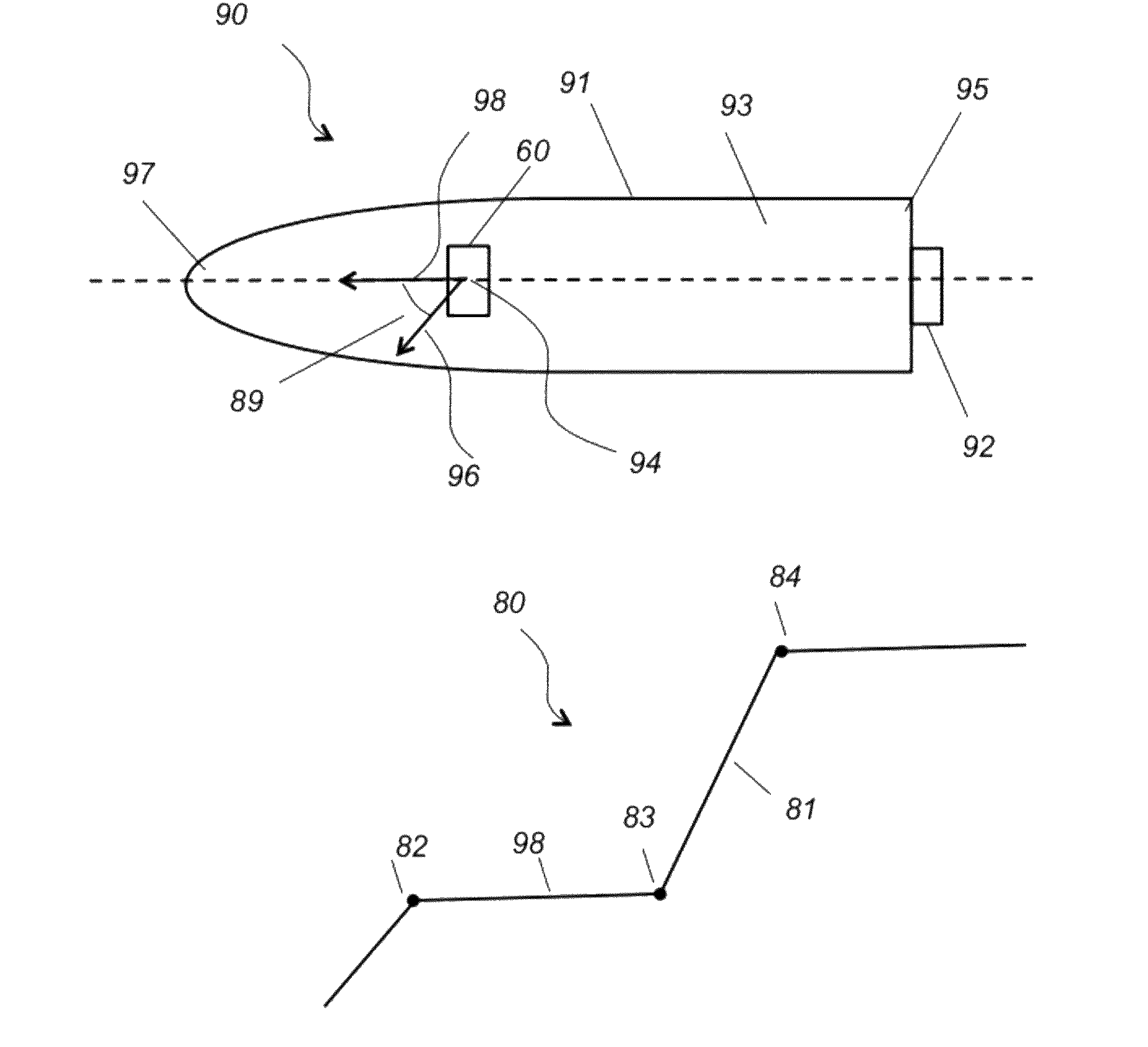System and method for a marine vessel autopilot
a marine vessel and autopilot technology, applied in the direction of steering initiation, navigation instruments, instruments, etc., can solve the problems of excessive rudder activity to accomplish maneuvers, and achieve the effects of improving piloting, reducing watch keeping personnel, and improving safety of the ship
- Summary
- Abstract
- Description
- Claims
- Application Information
AI Technical Summary
Benefits of technology
Problems solved by technology
Method used
Image
Examples
example 1
Track Line Keeping (Track Keeping App)
[0074]Voyages of ships at sea are mostly track line keeping along track lines between waypoints with occasional turns at waypoints. For track line keeping, the navigation application of the pilot line based steering system uses the pilot line in the following way. The origin of the pilot line is attached to the ship's turning point, and the other end of the pilot line, i.e., the tip, slides along the selected track line, as shown in FIG. 7B. The length of the pilot line is fixed at a value of approximately the ship's length. At each of the periodic GPS readings the offset (if any) and the track-line direction are used to compute the pilot-line direction and turning rate of a new convergence segment, shown in FIG. 7B. To prevent any sudden rudder jump, the corresponding approach course is also computed. As the pilot-line direction in the old convergence segment immediately prior to the GPS reading is nearly the same as the track-line direction an...
example 2
Turns at a Waypoint Application (WP Turn App)
[0076]As the ship following a track line in the track keeping mode approaches the waypoint, the Track-Keeping App. is automatically switched to the WP Turn App at a preselected point. Just prior to the time of the switching, the autopilot function may be in any one of the three segment types. Accordingly the ship may be offset from the track line in either direction and the pilot line direction and rate of turn in process of correcting the offset.
[0077]The first step in the WP Turn App is to compute the direction of the tangent line from the ship to the circumference of the turning circle at the waypoint which serves as the approach to the turn initiation point. The settle segment followed by the approach segment brings the pilot line direction to that of the tangent line. As the ship moves along the tangent line in the approach segment, the navigation function looks ahead to the next segment which is the settle (rate) segment. The point ...
example 3
Manual Steering Mode
[0081]During a planned automatic voyage situations may occur that require manual intervention such as keeping clear of traffic or a change in plan. The manual steering mode operates by giving the helmsman control of the pilot line direction and rate. The helmsman directly controls the pilot line rate and the resulting pilot line position is displayed in display 104, thus enabling the helmsman to set a new course. The autopilot function continues to operate in the manual mode to keep bringing the ship into alignment with the pilot line. The resulting steering action is far easier than fully manual steering. Without leaving the manual mode, the helmsman can manually switch off the rate action to hold a course indefinitely. The pilot line system computer prevents the helmsman's action from exceeding the prescribed turning rate limits of the ship and its rudder.
[0082]Before track line acquisition is initiated and after the final waypoint of the voyage is reached, the...
PUM
 Login to View More
Login to View More Abstract
Description
Claims
Application Information
 Login to View More
Login to View More - R&D
- Intellectual Property
- Life Sciences
- Materials
- Tech Scout
- Unparalleled Data Quality
- Higher Quality Content
- 60% Fewer Hallucinations
Browse by: Latest US Patents, China's latest patents, Technical Efficacy Thesaurus, Application Domain, Technology Topic, Popular Technical Reports.
© 2025 PatSnap. All rights reserved.Legal|Privacy policy|Modern Slavery Act Transparency Statement|Sitemap|About US| Contact US: help@patsnap.com



